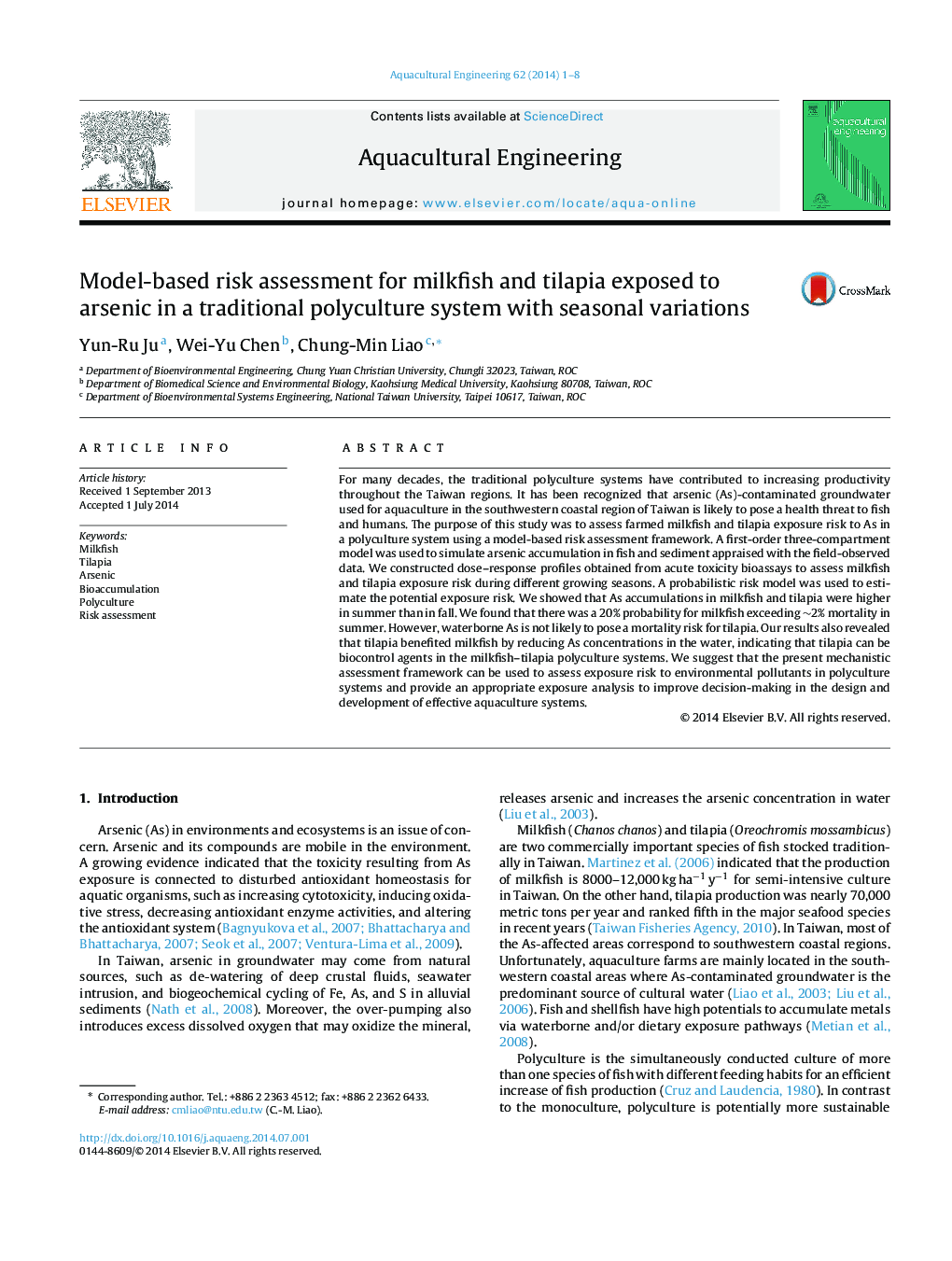| Article ID | Journal | Published Year | Pages | File Type |
|---|---|---|---|---|
| 6381335 | Aquacultural Engineering | 2014 | 8 Pages |
Abstract
For many decades, the traditional polyculture systems have contributed to increasing productivity throughout the Taiwan regions. It has been recognized that arsenic (As)-contaminated groundwater used for aquaculture in the southwestern coastal region of Taiwan is likely to pose a health threat to fish and humans. The purpose of this study was to assess farmed milkfish and tilapia exposure risk to As in a polyculture system using a model-based risk assessment framework. A first-order three-compartment model was used to simulate arsenic accumulation in fish and sediment appraised with the field-observed data. We constructed dose-response profiles obtained from acute toxicity bioassays to assess milkfish and tilapia exposure risk during different growing seasons. A probabilistic risk model was used to estimate the potential exposure risk. We showed that As accumulations in milkfish and tilapia were higher in summer than in fall. We found that there was a 20% probability for milkfish exceeding â¼2% mortality in summer. However, waterborne As is not likely to pose a mortality risk for tilapia. Our results also revealed that tilapia benefited milkfish by reducing As concentrations in the water, indicating that tilapia can be biocontrol agents in the milkfish-tilapia polyculture systems. We suggest that the present mechanistic assessment framework can be used to assess exposure risk to environmental pollutants in polyculture systems and provide an appropriate exposure analysis to improve decision-making in the design and development of effective aquaculture systems.
Related Topics
Life Sciences
Agricultural and Biological Sciences
Aquatic Science
Authors
Yun-Ru Ju, Wei-Yu Chen, Chung-Min Liao,
